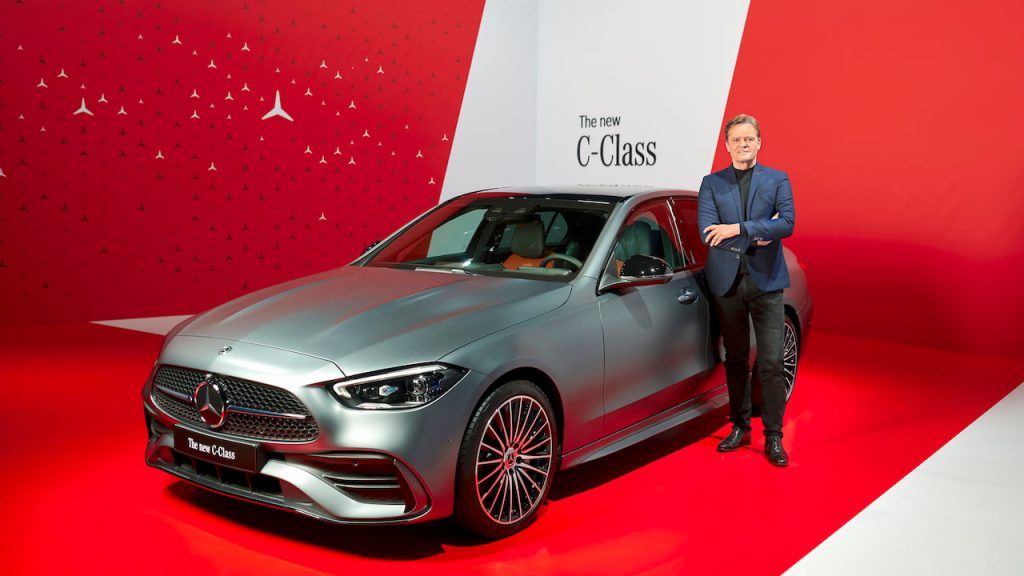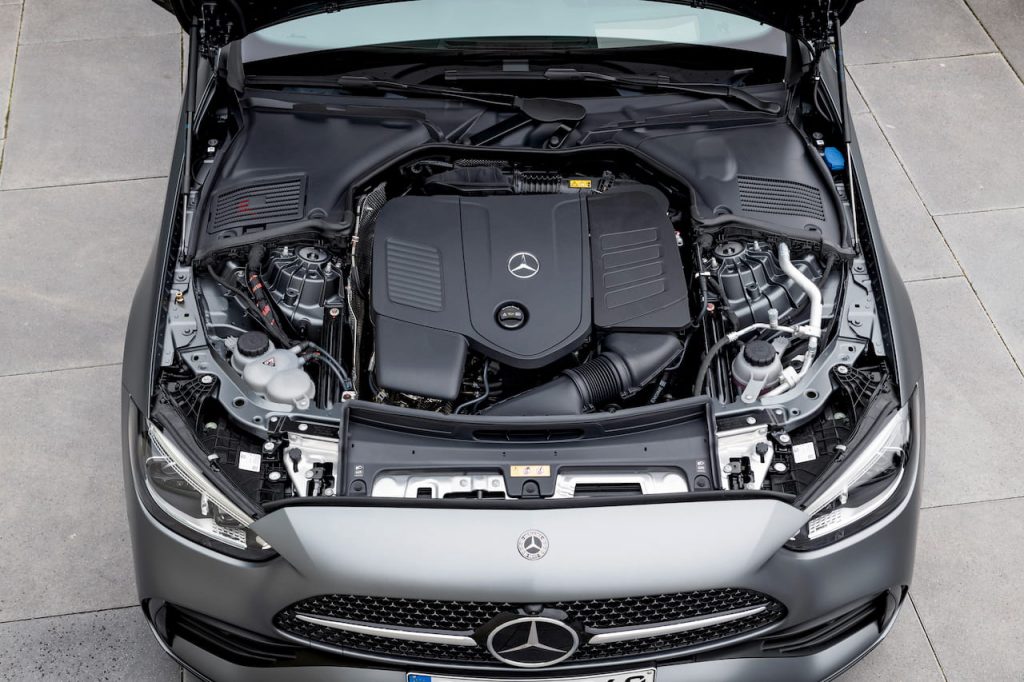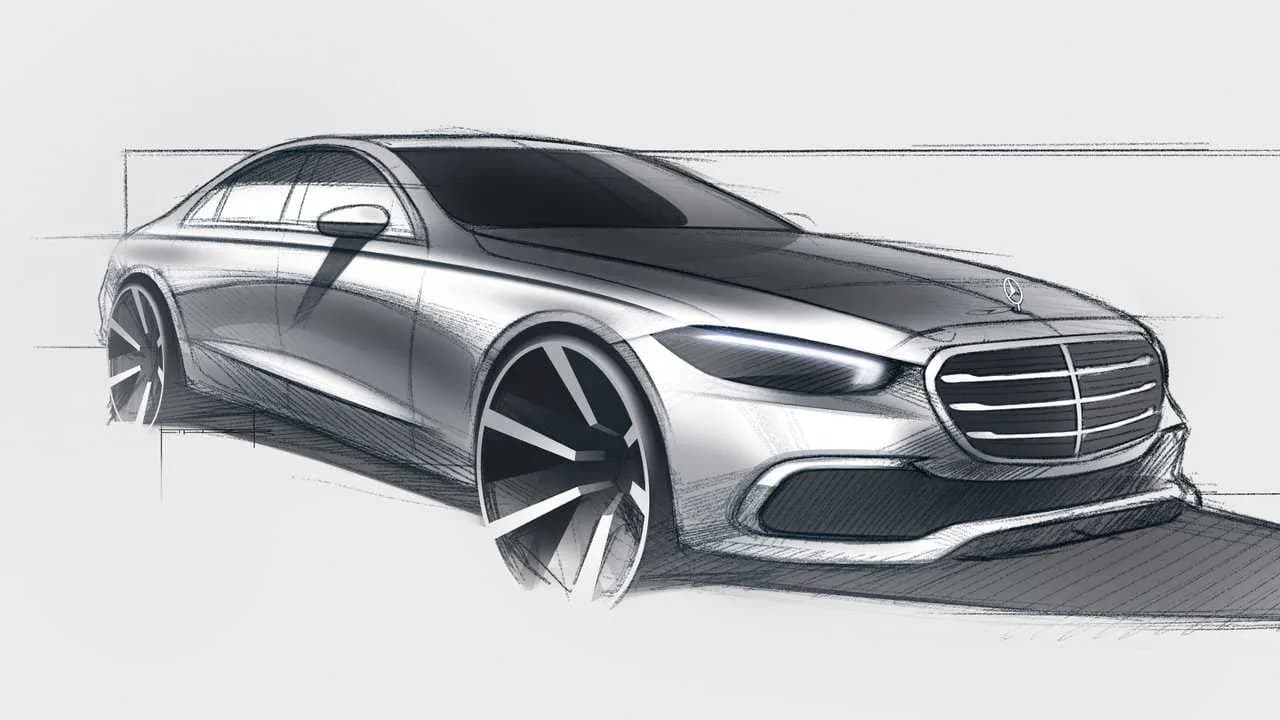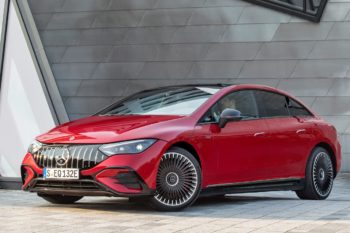Update: ‘On the 2023 Mercedes E-Class Engines’ section updated.
The ‘only-electrified’ powertrain strategy isn’t a one-time application reserved for the new C-Class family. According to an AutoZeitung report, entry-level variants of the next-gen 2023 Mercedes E-Class (code: Mercedes W214) will feature a 48V mild-hybrid system as standard, whereas higher up in the range, a plug-in hybrid system will be the norm.
Exterior & Interior
Road testing of the 2023 Mercedes E-Class commenced last year. A market launch is expected in the first half of 2023, about a year after the all-electric Mercedes EQE – the pure EV equivalent of the E-Class. We use the word ‘equivalent’ because Mercedes designers will distinguish the E-Class from the EQE, unlike the EQC-GLC or EQA-GLA pairs, making one vehicle quite futuristic and another in the classical form. This comes on the back of a dedicated EV platform, the Mercedes EVA, which debuted on the Mercedes EQS, giving designers the freedom to rethink the proportions of the sedan.

The exterior and interior of the next-gen Audi A6 rival will be inspired by the new S Class and C Class. Sharper lights and new aerodynamic enhancements around the bonnet, the windshield, and the fenders should bring down drag and improve fuel efficiency. However, it won’t be near the EQS or EQE in Cd, designed in the wind tunnel.
Spy pictures (via Auto Express) snapped during on-road testing indicate that, as expected, the 2023 E-Class will borrow design cues from the latest S-Class and C-Class models. The beltline rises aggressively in the next-gen model, lending the car a sportier look. Seamless handles flush with the doors will further accentuate the side view. They will likely electrically extend out automatically when the driver approaches or someone touches their outer surface and retract when not in use.
The bow-shaped greenhouse shows that the early test mules are of the standard-wheelbase version. A long-wheelbase E-Class is likely to be part of the range for Asian markets where customers demand additional comfort in the back seat. Thanks to its flat floor and cab-forward design, the EQE sedan would be more spacious than the standard-wheelbase E-Class, but it’s too early to market it as a replacement for the E-Class LWB. Limited production, higher price, and thin EV charging infrastructure are limiting factors that need to be overcome for Mercedes to go all-electric in this segment.
Video Source: YouTube/walkoARTvideos
A spy video published on YouTube channel walkoARTvideos points at an interesting change in the E-Class’ design. The higher deck further complements the rising beltline and adds to the car’s sporty character. Moreover, the rear-end appears more streamlined than the current generation. We observe new tail lamps featuring a triangular graphic but doubt if that’s the final design.
On the inside, the 2023 Mercedes E-Class’s highlight would be the smoother new-gen MBUX (Mercedes Benz User Experience) central screen alongside the driver display, heeding the call of customers who find the current infotainment a choppy experience. Also expect a complete rear-seat entertainment and comfort package, a current favorite among chauffeur-driven buyers and markets where the long-wheelbase specs are available.
On the 2023 Mercedes E-Class Engines
The 2023 E-Class should be manufactured only in mild-hybrid and plug-in hybrid variants.
The 2023 Mercedes E-Class engine line-up of the mild-hybrid variant may comprise multiple M 254 petrol and OM 654 M diesel units. Both engines will feature a second-gen starter generator that enables glide/coast, boost (15 kW/200 Nm), and brake energy recuperation functions using a 48-volt on-board electrical system. The M 254 petrol engine will likely come in 1.5L and 2.0L versions, with a maximum power of up to 150 kW (204 PS) and 200 kW (272 PS), respectively. The OM 654 M diesel engine will likely be a 2.0L unit offering between 147 kW (200 PS) and 243 kW (330 PS).

The plug-in hybrid variant would utilize the same petrol engine, (M 254 2.0L), but will rely on a powerful powerful electric motor and a bigger battery pack. The C-Class PHEV with this setup has a system power of 230 kW (313 PS) and a combined torque of 550 Nm. It has a 25.4 kWh battery pack that provides it a pure electric range of up to 99-111 km (62-69 miles) in EV mode.
2023 Mercedes E-Class features
Rear-axle steering
The next-gen E-Class would flaunt many new features already available in the new-generation S-Class and C-Class. Rear-axle steering would reduce the executive sedan’s turning circle by turning the rear wheels in the opposite direction, making maneuvers as easy as in a compact car. At high speeds, the benefit would be better handling.
Digital Light & second-gen MBUX
Key features of the 2023 E-Class should include Digital Light headlamps that can project marking aids and warning symbols onto the road ahead. Drive Pilot for semi-autonomous driving and second-gen MBUX that consists of a large central display in portrait orientation and voice control with “Hey Mercedes” prompt are also likely to be among the highlights.
Air-Balance
Daimler may offer an Air-Balance Package that allows customers to fragrance their car per their preference and improves air quality by ionization and optimized filtering of incoming and recirculating air. Energizing Coach would recommend various “feel-good programs” as per the vehicle and journey data and use musical and lighting moods. It can take the user’s personal values such as stress level or sleep quality from a paired smartwatch or another wearable device. These should be two of the company’s many different customer wellness features in the new executive car.
Airmatic
The Airmatic air suspension system should ensure that the driver and passengers travel in high physical comfort. It will likely automatically lower the car at highway speeds to minimize aerodynamic drag and provide a more dynamic driving experience. On poor roads, the driver can raise the ride height and increase the ground clearance. Calibration would change as per the selected drive mode.
Frontal airbags for rear-seat passengers are all but given for heightened safety. Pre-Safe Impulse Side function enabled by E-Active Body Control suspension, which quickly raises the car’s body in the event of a potential side impact, further enhancing safety, could also be available.
Active Steering Assist
The Active Steering Assist system would come in a new version that works at up to 210 km/h (130 mph) instead of 60 km/h (37 mph). Moreover, it would recognize an additional lane using the vehicle’s 360-degree camera and form an emergency corridor.
Price
Prices of the 2023 Mercedes E-Class may start at around EUR 50,000 in Germany and around USD 55,000 in the USA.
New Mercedes E-Class FAQs
What is the 2023 Mercedes E-Class release date?
The next-gen E-Class is expected to debut in the first half of 2023.
What cars are considered rivals to the Mercedes E-Class Hybrid?
The E-Class Hybrid will rival the Audi A6 Hybrid and the BMW 5 Series Hybrid. The Lexus ES Hybrid is another worthy contender.
What will be the price of the 2023 Mercedes E-Class?
The 2023 E-Class range is expected to start at around EUR 50,000 in Germany and around USD 55,000 in the USA.
Source: AutoZeitung & Avarvarii; Featured image: Daimler

![Mercedes EQE to release mid-year in the 350 variant [Update]](https://electricvehicleweb.com/wp-content/uploads/2021/09/2023-Mercedes-Benz-EQE-Edition-1-AMG-Line-front-350x243.jpg)

